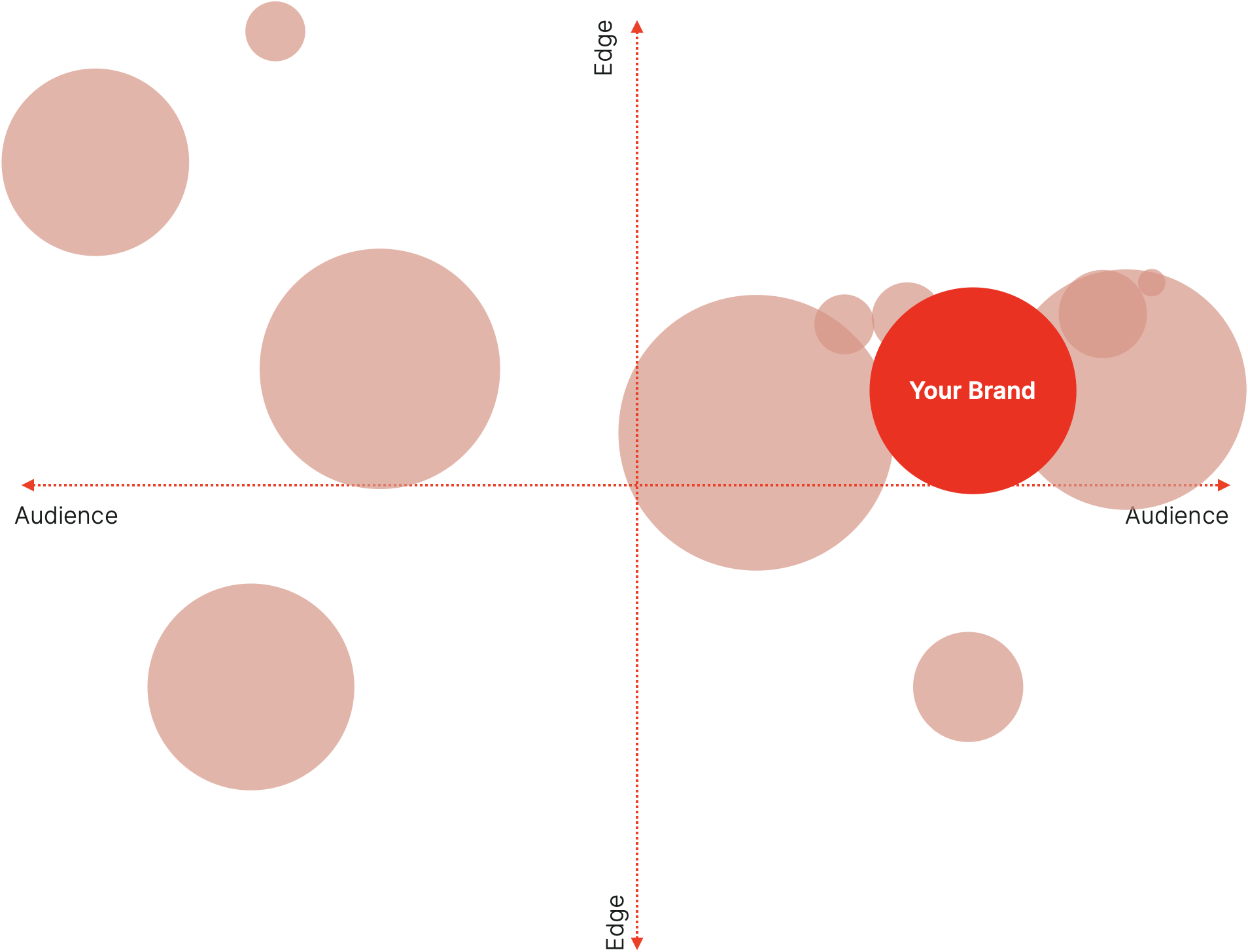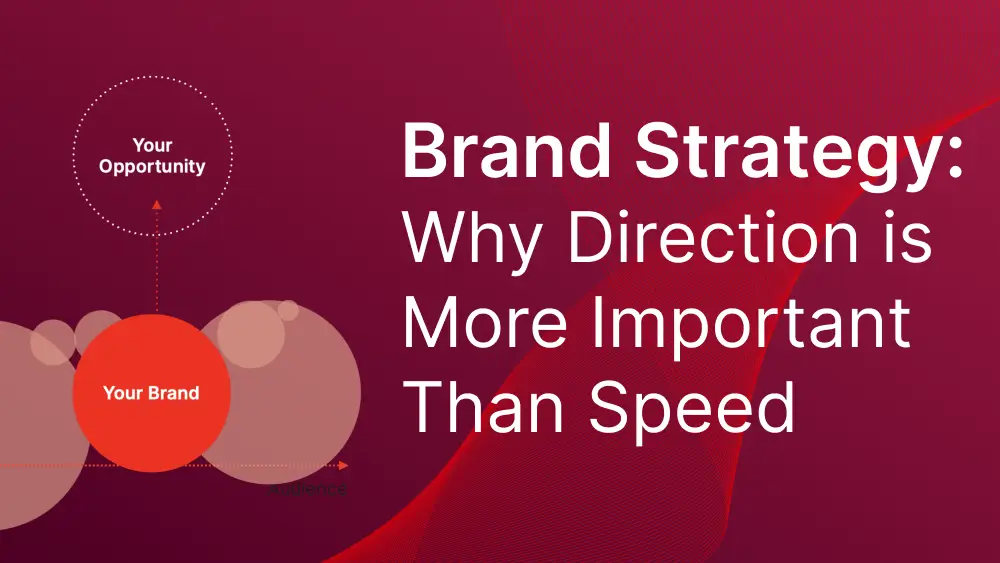When describing the motion of an object, physicists use two measurements: speed and velocity. Speed is the rate at which an object is moving along a path, while velocity is the rate and direction of an object's movement. Put simply; velocity has a direction, speed does not.
This is a crucial difference. As the quote goes:
“Direction is so much more important than speed. Many are going nowhere fast.”
In a world obsessed with speed this is a fundamental observation. Most brands are more concerned with growing instead of taking the time to assess their direction of travel.
As we’re now seeing, for every Manager with a solid brand strategy there are dozens whose only strategy was growth. And as the tide of cheap capital recedes, many are left exposed. If only they had had a set of guiding principles...
In the world of software development they use the term “Product Roadmap”. Atlassian, the $45Bn Australian software company behind Jira and Trello defines a product roadmap as:
A shared source of truth that outlines the vision, direction, priorities, and progress of a product over time.
This unified map is used to align the company and its resources around a shared goal to ensure that a) they meet a launch deadline, and b) don’t waste any time/money getting there.
Now quickly consider your own firm’s content on social media. Or your CEO’s last media interview. Or the background music in your last video. Or even the shades of colour on your business cards.
Do all of those things feel connected? Did all the decisions that you made about their creation stem from a single source of truth? If so, you can stop reading here.
But if those decisions felt disconnected or siloed, instead of part of a larger strategy, then what you need is a Brand Strategy.
The Four Hurdles
So why don’t more brands have a “shared source of truth”? And what should it include?
To answer that, we need to take a few steps back and look at what determines the long term success of a brand.
A successful brand needs to clear four hurdles:
- Relevance — is this product/service relevant to your audience?
- Differentiation — is this different to what others are offering?
- Protection — are you establishing competitive/economic moats to prevent someone else from copying (and usurping) you?
- Authenticity — does it feel genuine?
If the answer to any of the above is “no”, then its only a matter of time before someone else comes along and eats your lunch. The power of Brand Strategy is in identifying the threats, patching them up and then maximising your specific opportunity.
Every brand will face a different set of challenges. For some, the Relevance of their idea is the largest hurdle they’ll need to overcome. But for most brands Relevance isn’t the challenge. Relevance is often correlated with the size of your audience: a large audience results in ample opportunity. But that means that the second hurdle of Differentiation becomes the real challenge.
Let us quickly engage in a short exercise.
Off the top of your head take two or three minutes to list five qualities that differentiate your brand.
We can wait.
Ok, ready?
Now, looking at the list below how many of these did you think of:
- Experience
- Strong Team
- Deep Expertise
- Track Record
- Entrepreneurial
- Collaborative Culture
- Transparent
- Different thinking
- Long-term thinking
- Integrity
The chances are that 90% of those qualities apply to your firm. But they also apply to 90% of all firms. As legendary strategy advisor Roger Martin says:
If the opposite of your core strategy choices looks stupid, then every competitor is going to have more or less the exact same strategy as you.
That doesn’t mean you don’t have an edge, but it means that some digging is needed to uncover what actually sets you apart from the rest.
How to find your direction of travel
At Peregrine our method for approaching this is to plot your brand on a competitive landscape graph, using the size of the circles to indicate AuM.

A visual representation of where you sit relative to your competitors is an extremely effective way to quickly assess how the market sees you. Perhaps you are already occupying clear air but not being perceived in the way you’d like. Perhaps you’re sitting exactly where you want to be, but are surrounded by firms with a larger presence. Or perhaps you simply didn’t realise the number of competitors competing for your space.
Either way, all brands operate within a crowded landscape. Just how crowded depends on how you frame it. The key is to reframe the landscape along the lines of your true differentiator, or as Erwin Schrodinger put it:
“The task is…not so much to see what no one has yet seen; but to think what nobody has yet thought, about that which everybody sees.”
Are you genuinely data-led? Are you a niche performer? Do you have a large market presence? Is your solution low-cost?
Reframe the data and you’ll be able to see the opportunity for your brand. You’ll understand the direction you need to travel in.
The Key Components of Brand Strategy
Knowing where you need to go is only the beginning. The power of Brand Strategy is that it gives you the tools, power and method to get to where you want to be.
Brand Strategy is all about implementation. As Thomas Edison famously noted, “vision without implementation is just hallucination”.
So what goes into a Brand Strategy?
- Brand Diagnostic & Benchmarking — what are the positive and negative sentiments around your brand? How do these correlate to your aspirations? How does your brand momentum compare to your competitors? What is their paid media spend?
- Mission, Vision & Values — What do you stand for? How are you doing to get there? What qualities do you value in your team?
- Visual & Verbal Identity — What do you look like, and how do you sound? Do your tweets speak the same language as your CEO’s emails? Does your pitch deck make people feel the same way as your LinkedIn posts? Does the way your team dress match the way your website feels? All of these things need to feel interconnected.
- Extended Identity — if your brand were a person, a symbol or product, what would they be?
- Quality Cues — A quality cue is a product characteristic that serves as a shortcut to signal value to prospects. Best-in-class brands invest in 1-3 quality cues that they’re just known for, bringing the brand to life. What are you known for? Luxurious business cards? Branded notebooks? Simple and down-to-earth language?
This takes time. But as we learned at the beginning, this isn’t about speed. Once all the answers to the four hurdles are “yes”, and you know the direction you need to travel in, your Brand Strategy will act as that single source of truth that takes you there.
“Should we post this on LinkedIn”
“Would this person be a good hire?”
“Should we attend this event?”
“What do we talk about on Bloomberg?”
A robust Brand Strategy will give you the lens through which to answer all of those questions. Because all of those things are about Brand.
And if Jeff Bezos was right, that “branding is what people say about you when you’re not in the room”, then you need to make sure that when you leave the room everyone is clear on what you do and what you stand for.
Because if you don’t, then who will?


